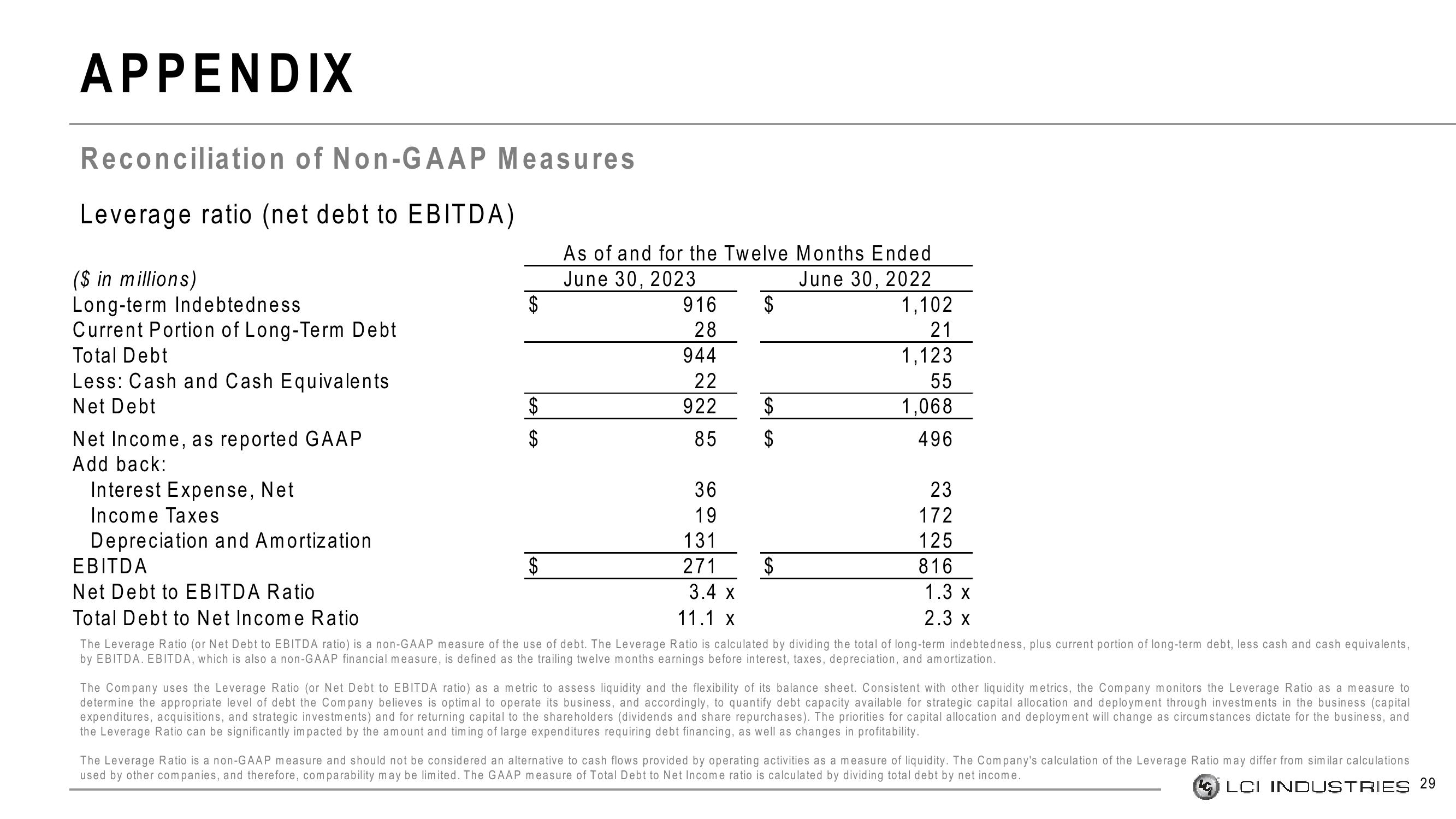LCI Industries Investor Presentation Deck
APPENDIX
Reconciliation of Non-GAAP Measures
Leverage ratio (net debt to EBITDA)
($ in millions)
Long-term Indebtedness
Current Portion of Long-Term Debt
Total Debt
Less: Cash and Cash Equivalents
Net Debt
Net Income, as reported GAAP
Add back:
Interest Expense, Net
Income Taxes
Depreciation and Amortization
EBITDA
Net Debt to EBITDA Ratio
Total Debt to Net Income Ratio
$
$
SA
$
the Twelve Months Ended
June 30, 2022
As of and
June 30, 2023
916
28
944
22
922
85
36
19
131
271
3.4 x
11.1 x
$
$
$
GA
$
1,102
21
1,123
55
1,068
496
23
172
125
816
1.3 x
2.3 x
The Leverage Ratio (or Net Debt to EBITDA ratio) is a non-GAAP measure of the use of debt. The Leverage Ratio is calculated by dividing the total of long-term indebtedness, plus current portion of long-term debt, less cash and cash equivalents,
by EBITDA. EBITDA, which is also a non-GAAP financial measure, is defined as the trailing twelve months earnings before interest, taxes, depreciation, and amortization.
The Company uses the Leverage Ratio (or Net Debt to EBITDA ratio) as a metric to assess liquidity and the flexibility of its balance sheet. Consistent with other liquidity metrics, the Company monitors the Leverage Ratio as a measure to
etermine the appropriate level debt the Company believes is optimal to operate its business, and accordingly, to quantify debt capacity available for strategic capital allocation and deployment through investments in the business (capital
expenditures, acquisitions, and strategic investments) and for returning capital to the shareholders (dividends and share repurchases). The priorities for capital allocation and deployment will change as circumstances dictate for the business, and
the Leverage Ratio can be significantly impacted by the amount and timing of large expenditures requiring debt financing, as well as changes in profitability.
The Leverage Ratio is a non-GAAP measure and should not be considered an alternative to cash flows provided by operating activities as a measure of liquidity. The Company's calculation of the Leverage Ratio may differ from similar calculations
used by other companies, and therefore, comparability may be limited. The GAAP measure of Total Debt to Net Income ratio is calculated by dividing total debt by net income.
LCI INDUSTRIES 29View entire presentation